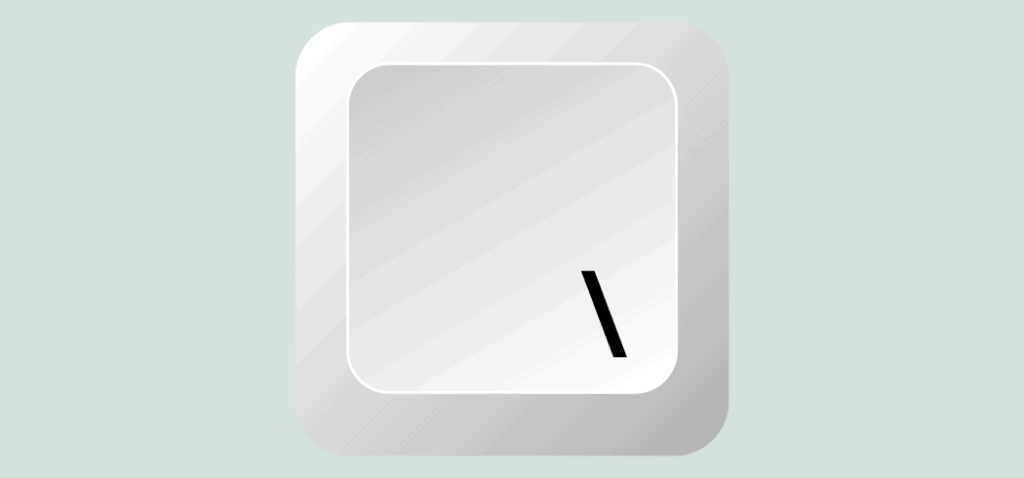The backslash is not used in writing, but it is worth identifying where it belongs and how it should be used. Not to be confused with the forward-slash symbol, the backslash will never be seen in either formal or informal writing, but you will see it in computer programming and mathematical equations.
Take a look at how the backslash symbol is used so you can avoid accidentally using it in place of a forward slash when writing.
What is a Backslash?
The backslash (\) is also called a backward slash, downward slash, or reverse solidus. It is not a symbol to be used in any form of written text but is essential to both computer code writing and some higher-level mathematical equations.
Backslash vs. Forward Slash
The backslash is only used in computer coding and mathematical equations. At the same time, a forward slash, also called a virgule (/), has quite a few rules of use associated with its grammatical usage. It can replace words such as and, or, and per; form abbreviations for both words and dates; indicate spans of time, fractions, and breaks in poetic lines; or work to define conflicting and connecting words and phrases.
It is important never to confuse the two since the forward-slash has many uses in informal written language, while the backslash has none.
History of the Backslash
The backslash came into regular use during the 1960s in ASCII computer programming language, although it can be traced back to the 1930s when it was called the diagonal key. It became even more well recognized in the 1980s when it was included in Microsoft Disk Operating System (MS-DOS) filename programming.
The symbol quickly became recognizable to anyone who had a home computer and has only been integrated further into modern programming code through the years.
Where is the Backslash on a Keyboard?

Depending on your keyboard size, the backslash key will be located either between the backspace and enter key or next to the enter key. It usually shares a key with the vertical bar or pipe key (|) symbol.
When using an online qwerty keyboard, you can find it by changing your board to the symbol list and using it from there.
When Can You Use a Backslash?
Backslash use is specific only to computer and math-related materials. You may see it in the following scenarios:
Programming Languages
In a computer programming language, the backslash is often used as an escape character or symbol to denote that the following character should be treated in a special manner.
It also can be used in computer algorithms for integer division and to help define integers that are equivalent to one another (for example: a\b = a/b.
Filename Path Creation for MS-DOS and Windows
IBM, Microsoft used the backslash to allow paths to be typed directly into the command line while retaining MS-DOS program language compatibility. This provided the means to separate filenames path creations from other commands without having to break to a new line.
Mathematical Equations
In math, the backslash can be used for set theory or to define the right coset space in group theory. These both deal with higher-level calculus equations that are not seen in lower-level math. As mentioned above, computer mathematical algorithms also take advantage of the backslash.
Let’s Review
A backslash is exclusively used in computer language coding and programming and in certain higher-level mathematical equation group theories. It is not used for grammatical writing scenarios and should never be confused with the forward slash.
